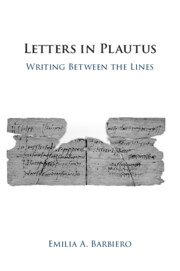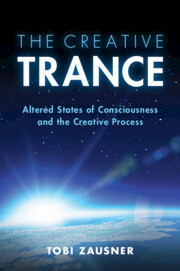Refine search
Actions for selected content:
31 results
4 - IP for AI Creations?
- from Part II - Hot Topics in AI and IP
-
- Book:
- AI versus IP
- Published online:
- 09 August 2025
- Print publication:
- 28 August 2025, pp 61-67
-
- Chapter
- Export citation
Conclusion
-
- Book:
- AI versus IP
- Published online:
- 09 August 2025
- Print publication:
- 28 August 2025, pp 130-132
-
- Chapter
- Export citation
7 - Shrinking the Value Proposition
- from Part III - The Deeper Problem for IP
-
- Book:
- AI versus IP
- Published online:
- 09 August 2025
- Print publication:
- 28 August 2025, pp 94-110
-
- Chapter
- Export citation
3 - Ulysses
-
-
- Book:
- The Cambridge Companion to James Joyce
- Published online:
- 14 August 2025
- Print publication:
- 21 August 2025, pp 47-63
-
- Chapter
- Export citation
8 - Situating The Rite of Spring within Stravinsky’s Compositional Oeuvre
- from Part II - Contexts
-
-
- Book:
- The Cambridge Companion to <i>The Rite of Spring</i>
- Published online:
- 28 June 2025
- Print publication:
- 17 July 2025, pp 173-188
-
- Chapter
- Export citation
Copyright and Originality: Evidence from Short Video Creation in a Platform Market
-
- Journal:
- Management and Organization Review / Volume 21 / Issue 1 / February 2025
- Published online by Cambridge University Press:
- 17 March 2025, pp. 50-72
-
- Article
- Export citation
Introduction
-
-
- Book:
- The Cambridge Companion to John Clare
- Published online:
- 14 November 2024
- Print publication:
- 21 November 2024, pp 1-14
-
- Chapter
- Export citation
3 - Copyright II:
- from Part I - Copyright
-
- Book:
- A Critical Introduction to Intellectual Property Law
- Published online:
- 17 May 2024
- Print publication:
- 06 June 2024, pp 49-85
-
- Chapter
- Export citation
The innovation paradox: concept space expansion with diminishing originality and the promise of creative artificial intelligence
-
- Journal:
- Design Science / Volume 10 / 2024
- Published online by Cambridge University Press:
- 19 April 2024, e11
-
- Article
-
- You have access
- Open access
- HTML
- Export citation
Copyright Protection for AI-Generated Works: Exploring Originality and Ownership in a Digital Landscape
-
- Journal:
- Asian Journal of International Law / Volume 15 / Issue 1 / January 2025
- Published online by Cambridge University Press:
- 23 January 2024, pp. 23-46
- Print publication:
- January 2025
-
- Article
-
- You have access
- Open access
- HTML
- Export citation
Chapter 7 - Walter Pater, Second-Hand Stylist
- from Part I - General
-
-
- Book:
- Walter Pater and the Beginnings of English Studies
- Published online:
- 14 November 2023
- Print publication:
- 09 November 2023, pp 133-148
-
- Chapter
- Export citation
Introduction
-
- Book:
- Matter and Making in Early English Poetry
- Published online:
- 15 June 2023
- Print publication:
- 29 June 2023, pp 1-14
-
- Chapter
- Export citation
4 - Genius, Thick and Thin
- from Part II - Genius and the Fine Arts
-
- Book:
- The Origins of Kant's Aesthetics
- Published online:
- 10 January 2024
- Print publication:
- 26 January 2023, pp 103-128
-
- Chapter
- Export citation

Letters in Plautus
- Writing Between the Lines
-
- Published online:
- 01 December 2022
- Print publication:
- 15 December 2022
1 - Copyright and Creativity
- from Part I - The Law and Neuroscience of Creative Activity
-
- Book:
- Intellectual Property and the Brain
- Published online:
- 14 July 2022
- Print publication:
- 28 July 2022, pp 15-37
-
- Chapter
- Export citation
Chapter 16 - Unoriginality
- from Part II - Forms and Formats
-
-
- Book:
- American Literature in Transition, 1820–1860
- Published online:
- 09 June 2022
- Print publication:
- 23 June 2022, pp 269-284
-
- Chapter
- Export citation
Chapter 2 - Consciousness and Creativity Theory in the Creative Trance
-
- Book:
- The Creative Trance
- Published online:
- 02 June 2022
- Print publication:
- 09 June 2022, pp 24-36
-
- Chapter
- Export citation

The Creative Trance
- Altered States of Consciousness and the Creative Process
-
- Published online:
- 02 June 2022
- Print publication:
- 09 June 2022
REMARKS ON TECHNOLOGICAL NEUTRALITY IN COPYRIGHT LAW AS A SUBJECT MATTER PROBLEM: LESSONS FROM CANADA
-
- Journal:
- The Cambridge Law Journal / Volume 81 / Issue 1 / March 2022
- Published online by Cambridge University Press:
- 09 February 2022, pp. 50-83
- Print publication:
- March 2022
-
- Article
-
- You have access
- Open access
- HTML
- Export citation
Chapter 7 - Margaret Atwood’s Revisions of Classic Texts
-
-
- Book:
- The Cambridge Companion to Margaret Atwood
- Published online:
- 19 March 2021
- Print publication:
- 01 April 2021, pp 109-123
-
- Chapter
- Export citation
